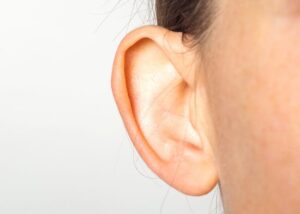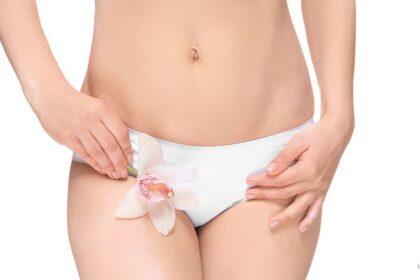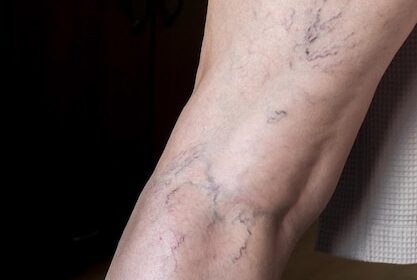Traditional vs. Advanced Surgical Methods
Traditional ear reshaping usually involves making incisions behind the ears to reshape cartilage through suturing, folding, or removal. While effective, these methods have been enhanced by advanced techniques that improve the accuracy of cartilage manipulation and minimize trauma to surrounding tissues.
For example, the use of absorbable sutures has become a popular advancement. These sutures dissolve naturally after serving their purpose, reducing the need for removal and lessening the risk of noticeable marks. Surgeons also now use smaller, more strategic incisions placed in areas where scars are less visible, resulting in a cleaner, more natural outcome.
Laser-Assisted Cartilage Reshaping (LACR)
One of the most innovative advances is laser-assisted cartilage reshaping. This technique uses laser energy to gently heat and soften the cartilage, allowing it to be reshaped more easily and precisely. Unlike traditional methods that rely heavily on cutting and suturing, the laser helps relax the cartilage structure, enabling subtle adjustments that maintain the ear’s natural contours.
This method is particularly beneficial for patients with thick or stiff cartilage that is otherwise difficult to reshape. Laser-assisted reshaping can lead to less bleeding, reduced swelling, and a smoother final ear contour. It offers a gentler, yet highly effective, alternative to purely mechanical cartilage manipulation.

Implant-Assisted Techniques
Another modern option involves small, biocompatible implants that help fold or pin the ear into the desired shape. These implants are placed beneath the skin and support the ear structure without relying solely on sutures. By providing a stable framework, implant-assisted techniques can achieve predictable and consistent results, especially for ears that need correction of protrusion or certain shape irregularities.
This method is less invasive compared to some traditional surgeries, often allowing for quicker recovery while still providing lasting correction.
Non-Surgical and Minimally Invasive Options
For those seeking subtler changes or who may not require full surgical intervention, several minimally invasive and non-surgical methods are available.
Injectable Fillers and Dermal Augmentation
Injectable fillers, typically used in facial contouring, can be strategically applied to the ear area to smooth out irregularities, improve symmetry, or diminish the appearance of minor protrusions. While these treatments offer immediate enhancement with no downtime, their effects are temporary and require periodic maintenance.
Thread Lift Techniques
Thread lifts involve inserting dissolvable threads under the skin or cartilage to provide subtle lifting and reshaping. These threads stimulate collagen production, which can improve firmness and contour over time. This technique suits individuals with mild ear concerns and those who prefer procedures with minimal recovery periods.
Ear Molding Devices
In infants or very young children, custom ear molds or splints can gently reshape the ear cartilage over time through consistent pressure. This non-surgical option works best when started early because the cartilage is softer and more malleable in the first few weeks of life.
Compression and Support Garments
Medical-grade tape, compression bands, or specially designed headbands are often used after surgery or in conjunction with other treatments to maintain the new ear shape. These garments apply gentle pressure that supports healing and helps ensure that the ear retains its corrected position.
Combining Techniques for Optimal Outcomes
Often, the best results come from combining multiple techniques tailored to the patient’s specific ear anatomy and aesthetic goals. For example, laser-assisted reshaping might be paired with implant support for refined contouring, or surgical correction followed by the use of compression garments for faster recovery and better shape retention.
This multi-modal approach allows surgeons to customize treatments that balance effectiveness, safety, and recovery time according to individual needs.
Recovery with Advanced Techniques
Patients undergoing advanced ear reshaping methods generally experience shorter recovery times, less swelling, and reduced discomfort compared to traditional surgeries. Smaller incisions and less invasive manipulation translate to quicker healing and a faster return to everyday activities.
Proper post-procedure care remains essential. Wearing supportive headbands or compression garments, avoiding pressure or trauma to the ears, and following all medical advice helps optimize healing and ensure lasting results.
Why Choose Abu Dhabi for Advanced Ear Reshaping?
Abu Dhabi is recognized for its cutting-edge medical technology and highly trained surgeons specializing in aesthetic procedures. The city’s healthcare facilities are equipped with the latest laser systems, implant materials, and advanced surgical tools, making it an ideal place to access the most innovative ear reshaping techniques.
The cultural appreciation for subtle and natural enhancements means procedures here focus on refined, harmonious outcomes. Patients benefit from personalized care plans that respect their individual features while delivering enhanced aesthetics.
FAQs about Advanced Ear Reshaping in Abu Dhabi
What advanced ear reshaping techniques are commonly used in Abu Dhabi?
Advanced techniques include laser-assisted cartilage reshaping, implant-assisted pinning, absorbable sutures, injectable fillers, thread lifts, and ear molding devices. These methods can be combined depending on the patient’s needs.
How does laser-assisted reshaping differ from traditional surgery?
Laser-assisted reshaping uses targeted heat to soften and mold cartilage more precisely, often resulting in less bleeding and swelling. This allows surgeons to sculpt the ear with finer control compared to traditional mechanical methods.
Are scars visible after advanced ear reshaping procedures?
Scars are usually hidden behind the ear or within natural creases. Advanced techniques involve smaller, more precise incisions, which minimizes visible scarring. Over time, scars typically fade significantly.
Can non-surgical methods provide lasting results?
Non-surgical methods like fillers and thread lifts are generally temporary and require maintenance. However, they are effective for mild corrections or for patients seeking minimal downtime.
Who is a good candidate for minimally invasive ear reshaping?
Individuals with minor protrusions, asymmetries, or those preferring to avoid surgery often benefit from minimally invasive options. Suitability depends on cartilage flexibility and aesthetic goals.
How soon are results visible after the procedure?
Initial improvements are often noticeable immediately or within a few days. Final results typically become apparent after swelling subsides, which can take several weeks.
Does cartilage thickness affect technique choice?
Yes. Thick cartilage may require laser assistance or implants for effective reshaping, while thinner cartilage can often be adjusted with sutures or non-surgical methods.
Is it safe to combine multiple ear reshaping techniques?
Yes, when performed by experienced surgeons, combining techniques can improve outcomes and stability. Proper evaluation and planning ensure safe and effective treatment.


